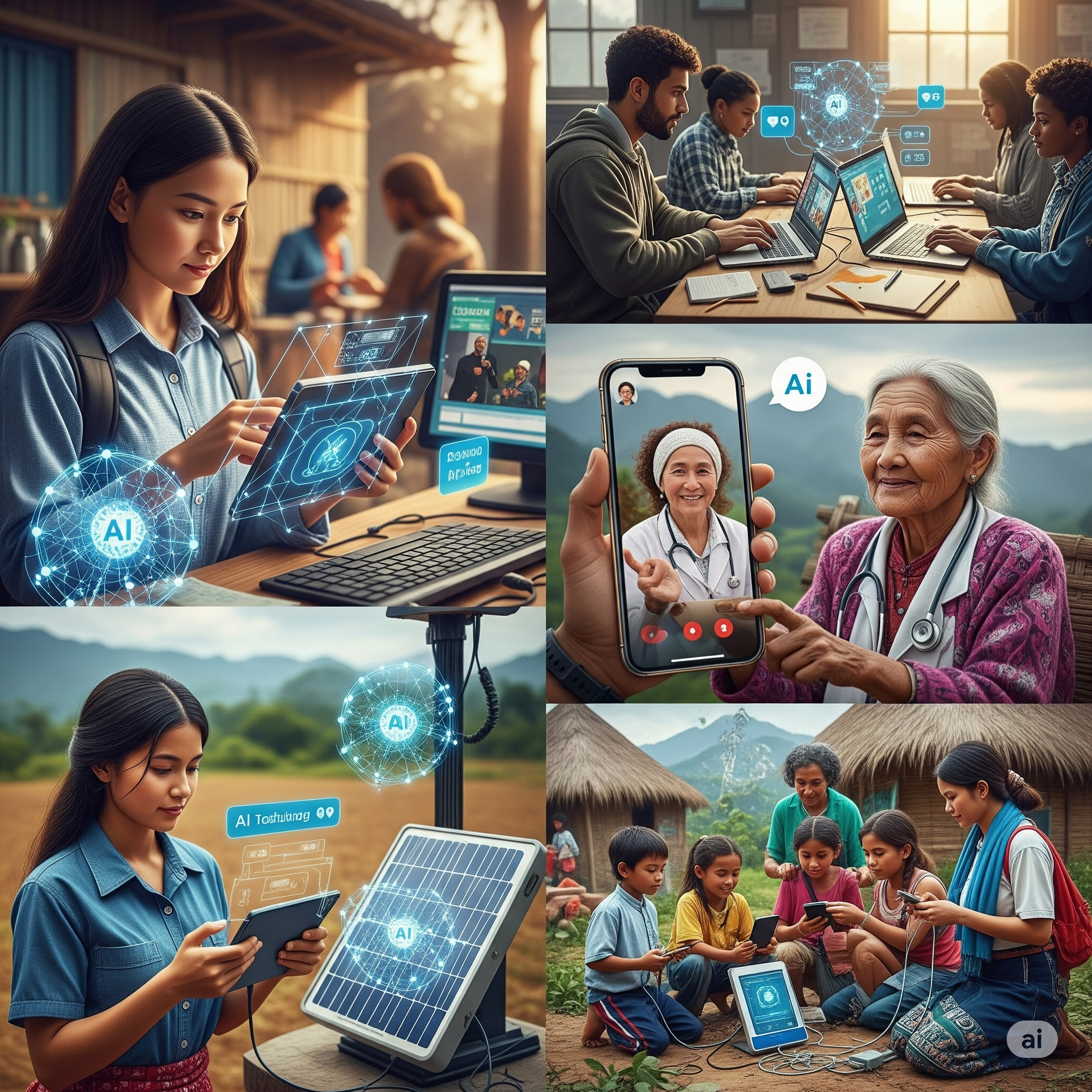
Bridging the Digital Divide with AI: The Indian Government’s Vision
- admin
- July 19, 2025
- Tech & Innovation
- 0 Comments
Exploring how the Indian government is leveraging artificial intelligence to ensure equitable access to digital technologies and opportunities for all citizens.
Key Highlights
- AI for Regional Language Inclusion: Tools to make digital resources accessible in India’s diverse languages.
- Digital Literacy Programs: AI-powered platforms for training citizens in underserved areas.
- Access to Technology Infrastructure: Expanding connectivity and digital tools in rural and remote regions.
- AI for Social Equity: Using AI to address challenges in education, healthcare, and employment for marginalized communities.
1. AI for Regional Language Inclusion
One of the significant barriers to digital inclusion in India is its linguistic diversity. The government is deploying AI to create tools that break language barriers, enabling non-English-speaking citizens to access online resources, services, and opportunities.
Key Initiatives:
- Bhashini: An AI-driven project under the Digital India program that facilitates real-time translation and speech recognition in regional languages.
- AI-powered voice assistants integrated into government portals to make them accessible to citizens in their native languages.
2. Digital Literacy Programs
To bridge the digital divide, the Indian government has introduced AI-driven training platforms that provide digital literacy education in a user-friendly and accessible manner. These programs focus on teaching basic and advanced digital skills, enabling citizens to participate in the digital economy.
Programs in Action:
- PMGDISHA (Pradhan Mantri Gramin Digital Saksharta Abhiyan): AI tools enhance this program by personalizing training content and monitoring progress.
- AI-enabled mobile apps and games designed to teach digital skills to users with low literacy levels.
3. Access to Technology Infrastructure
The government is using AI to optimize and expand digital infrastructure in underserved areas, ensuring that rural and remote communities can access the internet and digital services. AI technologies are helping prioritize and streamline connectivity projects.
Infrastructure Development:
- BharatNet: AI analytics are used to identify connectivity gaps and deploy high-speed internet to villages more effectively.
- Use of AI in satellite data analysis to pinpoint regions with poor connectivity for targeted interventions.
4. AI for Social Equity
AI is being applied to address systemic inequities in sectors such as education, healthcare, and employment. By focusing on these areas, the government ensures that marginalized communities benefit from technological advancements.
Equity-Focused Applications:
- AI-powered e-learning platforms providing quality education in remote areas, with adaptive content catering to individual learning levels.
- AI-driven telemedicine solutions under initiatives like eSanjeevani, offering healthcare access to rural populations.
Challenges and Opportunities
While AI offers transformative potential, challenges such as limited digital literacy, affordability of devices, and ethical concerns around data usage persist. Overcoming these hurdles requires continued investment in infrastructure, awareness programs, and collaborations with private and international stakeholders.
Conclusion
The Indian government’s use of AI to bridge the digital divide demonstrates a commitment to fostering inclusivity in the Information Age. By prioritizing linguistic diversity, digital literacy, and equitable access to technology, AI is empowering millions to participate in the digital economy and improve their quality of life. As these initiatives expand, they hold the promise of a more connected and equitable society.


